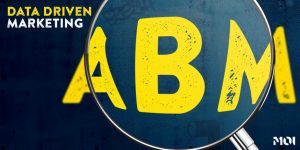2 min read

Even before the pandemic, data leaders were needing to deliver better quality, more resilient data and analytics insight to the business in the face of constant change. Now, with new technologies and business practices creating more and more data every day, opportunities arise and disappear in the blink of an eye. The need for speed, accuracy and resilience is off the scale by anyone’s standards.
So how will organisations deliver? How can they achieve the agility to make ever-faster, better-informed decisions, often in real time, that ensure continuous value delivery while simultaneously assessing and mitigating risk?
For many, including Gartner, the answer lies in DataOps
Put simply, DataOps is a streamlined process for best practice data management. It promotes better integration, communication and collaboration between the individuals, teams and processes involved in data collection, analysis and putting the resulting insights to good use. Basically, it’s about optimising the process of extracting the best value from your data, while simultaneously and continuously adhering to best in class governance and security protocols.
According to Gartner, for DataOps to be implemented successfully, and to derive maximum value from their data, data leaders must align it with how data is consumed, rather than how it is created in their organisation.
With this is mind, Gartner suggests the alignment of DataOps to three core value propositions: its utility, its function as a business enabler, and its role as a driver for change and growth.
1. Utility
For Gartner, this means ensuring data and analytics are readily available to all key roles by removing silos and manual effort, and assigning a data product manager to ensure the needs of all data stakeholders are met.
MOI’s VP, Marketing Ops, Greg Campbell adds: “yes, and the combination of clarity about needs and one dedicated project owner will also ensure the appropriate data model is in place, and streamline the entire process.”
The data product manager would of course need to liaise with multiple business functions and stakeholders, so how workable is this in a larger organisation? “In an enterprise operation , you’ll more likely see a scenario with data owners across each function area – marketing, sales, finance etc” admits Greg.
2. Enabler
With better access to data and analytics, DataOps should enable the business to make the right decisions, whatever the use case.
Data and analytics supports use cases from fraud detection, to supply chain optimisation, to interenterprise data sharing – and DataOps must drive collaboration with all relevant business-unit stakeholders.
Greg Campbell goes further. “It comes right down to who has access, to what level and how is data properly and effectively managed in the business”, and he adds an important point about consistency: “It all needs to be from a single hymn sheet, or else silos will create a disconnect through teams and processes.”
3. Driver
Data and analytics should drive the business by helping business unit stakeholders to see and quickly act on opportunities, says Gartner.
For Greg, seizing opportunity must go hand in hand with risk assessment. “It’s critical for businesses to grow and scale in an ever changing market and environment” he says, “so it’s not just about opportunites, it’s about mitigating threats, curbing weaknesses and doubling down and exploiting strengths.”
According to Gartner, if data leaders adopt the above framework, then the development of data pipelines becomes a collaborative exercise with a shared understanding of the value proposition. By creating groups and processes that work together, you’re creating a futureproof, streamlined system that will help you get the very best from your data, ensuring every stakeholder gets the right insights at the right time for the right business outcome.
And Greg is quick to re-emphasise the threat of our ever changing environment: “There are new entrants and competitors entering your space constantly – offering cheaper products or faster services for customers. Right now, it’s not even about staying ahead of the curve, it’s keeping up with it”
Related content









